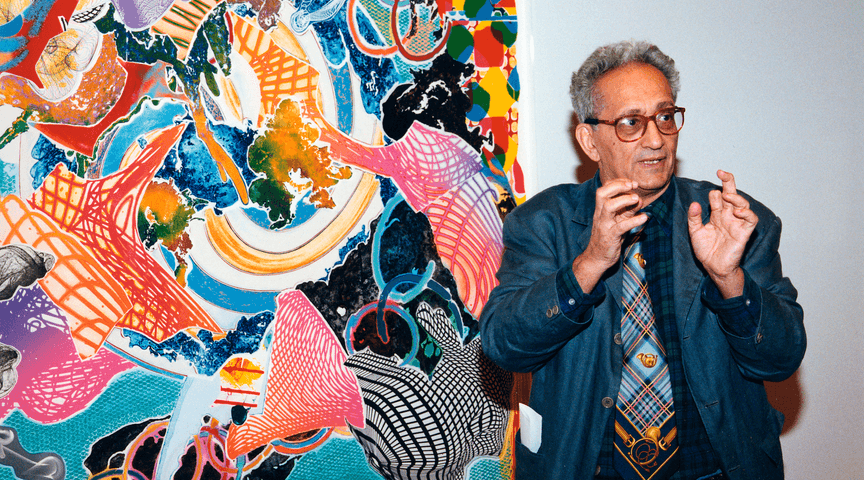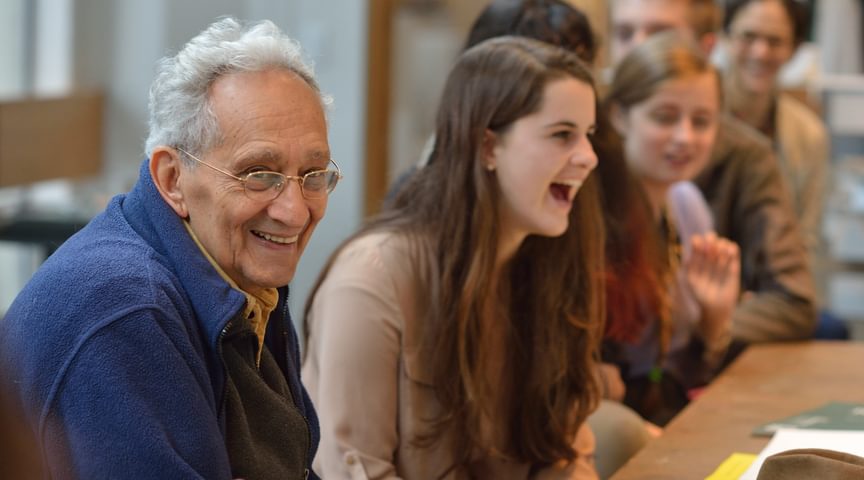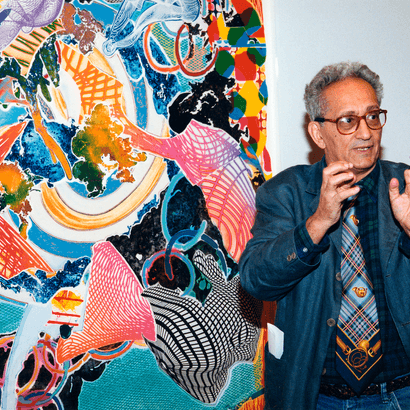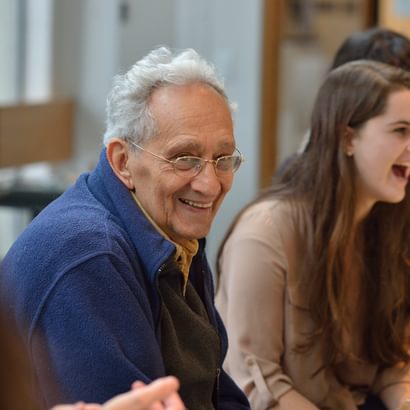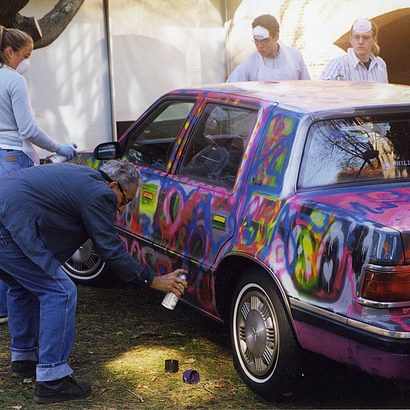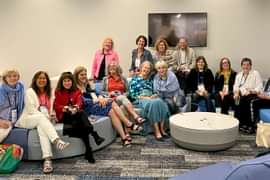May 16, 2024
Remembering Frank Stella ’54
American art pioneer passes away at 87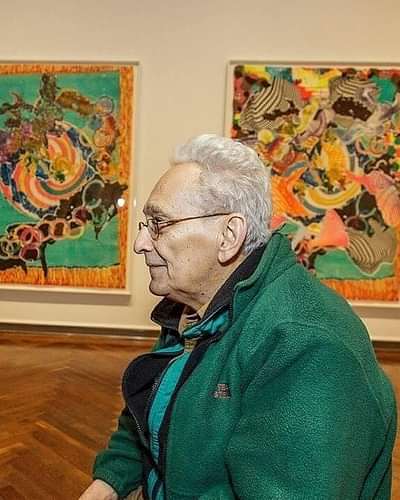 Frank Stella '54 at the Addison Gallery of American Art
Frank Stella '54 at the Addison Gallery of American Art
Frank Stella ’54, one of the most significant and influential American artists of the postwar period, died on May 11 at his home in Manhattan one day shy of his 88th birthday.
Stella began his journey as a painter six decades ago in the basement of the Addison Gallery of American Art. It was also at Andover that he first met Hollis Frampton ’54, who went on to become an equally distinguished photographer and filmmaker. Four years after graduation from Phillips Academy, the two met again in New York, where they briefly shared an apartment and rekindled what was to be a lifelong friendship. Frampton began his series of 52 black-and-white images in the book, The Secret World of Frank Stella, in collaboration with Stella, who posed both in his studio and across the city.
According to the Boston Globe, Stella was ever restless, dynamically shifting his work in both style and scale while defying categorical boundaries between painting and sculpture. He was equally unbound from the many movements in American art competing for dominance in the latter half of the 20th century.
Allison Kemmerer, The Mary Stripp and R. Crosby Kemper Director of Addison Gallery of American Art, shared the following reflection upon hearing of Stella's passing.
One of the most impactful and innovative artists of our time, Frank Stella (1936-2024) consistently challenged the boundaries of painting and the potential of abstraction. While there is an undeniable thread of logic running from one body of work to the next, the steadfast and dramatic evolution of his art from early disciplined minimalist paintings to the later dynamic, baroque—even explosive—compositions attest to the artist’s extraordinary expansiveness. As the late art historian Bill Agee wrote, Stella offered “one surprise after another that [has] always pointed to new directions and possibilities.”
The Addison is fortunate to have had a long and meaningful relationship with Stella, as an alum (PA 1954), exhibiting artist, artist-in-residence, donor, and board member. The Addison’s collection includes 106 objects (paintings, sculpture, prints, and works on paper) by Stella.
Stella’s experience at Phillips Academy was crucial to his formation as an artist. It was here that he began to seriously pursue art, studying along with classmates Carl Andre and Hollis Frampton, under the guidance of faulty members Patrick Morgan, and Gordon (Diz) Bensley. As he took art classes in the basement of the museum and learned from the collections in its galleries, Stella found great inspiration in the Addison’s environment. Stella would note in 1982 that the art program at Phillips Academy “would never have been the same without the Addison Gallery…Art education must be a felt presence; you must observe real things. It just doesn’t work to see everything secondhand, through slides and photographs.”
Later he added, “If a young person walks through a gallery of American painting in the 1950 and confronts the work of Copley, Inness, Sargent, Eakins, Remington, Homer, Dove, Hartley, Hofmann, Pollock, and Kline he will want to paint like Hofmann, Pollock, and Kline, admiring Hartley and Dove for the proximity to the former, and acknowledging the rest for their accomplishment and effort in facing the task of art. Looking at what happened and is happening, one has to want to do what is happening. Immediate sources count for a lot.”




